Cartoon Couples and Friends on Film:
Art from the Heart

Cartoon Couples and Friends on Film:
Art from the Heart

The Tigger Movie is a 2000 American animated musical dramedy film co-written and directed by Jun Falkenstein. Part of the Winnie-the-Pooh series, this film features Pooh’s friend Tigger searching for his family tree and other Tiggers like himself.
The film was the first feature-length theatrical Pooh film that was not a collection of previously released shorts.
This is also the first film in the series where Tigger is voiced by Jim Cummings (who also voices Pooh), Tigger’s original voice actor, Paul Winchell, officially retired from the role in 1999 after A Valentine for You and died in 2005. Cummings had already played Tigger in Cartoon All-Stars to the Rescue and the final 2 seasons of The New Adventures of Winnie the Pooh.
The film features original songs from the Sherman Brothers. Originally, the film was originally slated for a direct-to-video release, until then–Disney CEO Michael Eisner heard the Sherman Brothers’ score, and decided to release the film in theaters worldwide.
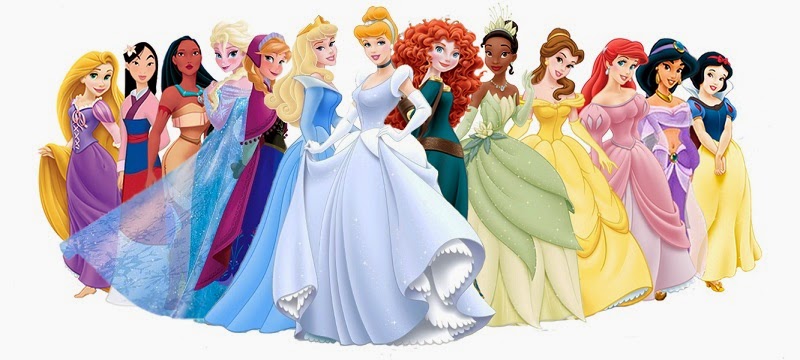
Looking for the perfect gift? ArtInsights has images of all your favorite powerful princesses and heroines to make your holidays happy! All the delightful Disney Princesses are here! Snow White, Cinderella, Rapunzel, Ariel, Anna, Elsa, Mulan, Pocahontas, Merida, Tiana, Belle, Aurora, and Jasmine are all represented in stunning artwork by real Disney artists! There’s something for everyone in this spectacular lineup of beautiful Disney art.

Theodor Seuss Geisel published How the Grinch Stole Christmas under the pen name Dr. Seuss in 1957. The story centers around a grumpy grinch who is bent on ruining the Christmasses of the village of Whoville.
The Art of Dr. Seuss has exclusive access to the wonderfully whimsical works made by the talented illustrator and now ArtInsights has partnered with them to bring you these delights!
Click here to see all Grinch art available through The Art of Dr. Seuss!
Click here to see all illustration art from How the Grinch Stole Christmas!
Please contact the gallery for information about purchasing a Seuss artwork. Email us at artinsights@gmail.com or call toll-free at 800-820-1717.
About the artist:
Theodor Seuss Geissel is an American writer more commonly known by his pen name Dr. Seuss. He is most famously known for children’s books such as Horton Hears a Who! (1955), The Cat in the Hat (1957), How the Grinch Stole Christmas! (1957), and Green Eggs and Ham (1960) which have sold over 600 million copies in more than 20 languages world wide.
After graduating from college, Dr. Seuss worked as an illustrator and cartoonist for Vanity Fair as well as the PM. During World War II, he worked for the animation department for the United States Army producing several propaganda short films on behalf of the military. After the war ended, he focused primarily on publishing children’s books.
Dr. Seuss’s illustrations were strongly influenced by the Surrealist movement of the 1920s and that carried through in his artwork throughout the span of his career. He has a dreamlike quality to his work that often defies the laws of physics but emphasizes the whimsical attitude of the books he created for children.
His career has spanned decades and influenced millions, earning him accolades in all avenues, from a building in his name at his alma mater to pulitzer prizes and peabody awards. In 2010, Life Books included him in their 100 People Who Changed the World.
Click here for Authorized Gallery’s detailed biography on the life of Dr. Seuss!

In Hollywood is Dead by Matt Busch, the film artist reimagines blockbuster and cult classic movie posters with zombies! Yes, it sounds like he’s jumping on the Walking Dead bandwagon… except the project for these transformative, highly creepy and highly entertaining images started way before that show ever aired and made zombie-lovers of doubting dead-Thomases!
Check out the last remaining originals from his project, which was collected into a lovely coffee table book for you to enjoy!
About the Artist:
Matt Busch has created a name for himself all over the production art business, working on comic books, movies, trading cards, and everything else he can get his hands on. He has even tried his hand at some independent filmmaking. He is dubbed “The Rockstar of Illustration”. Originally living in the land of Hollywood, Matt Busch now set his base of operations just outside of Detroit, Michigan.
Click here to see more work by Matt Busch.

Song of the South is a 1946 American live-action and animated musical film produced by Walt Disney and released by RKO Radio Pictures , based on the Uncle Remus stories collected by Joel Chandler Harris. It was Disney’s first feature film using live actors, who provide a sentimental frame story for several animated segments. The film depicts the character Uncle Remus, presumably a former slave, cheerfully relating to several children, including the film’s protagonist, the folk tales of the adventures of anthropomorphic Br’er Rabbit and his enemies, Br’er Fox and Br’er Bear. The film’s song “Zip-a-Dee-Doo-Dah” won the 1947 Academy Award for Best Song, is frequently used as part of Disney’s montage themes, and has become widely used in popular culture. James Baskett was given an honorary Academy Award in 1948 for his portrayal of Uncle Remus; the first Oscar (although an honorary one) to a male African-American actor. The film inspired the Disney theme park attraction Splash Mountain.
The film’s depiction of black former slaves, and of race relations in Reconstruction-Era Georgia, has been controversial since its original release, with a number of critics — at the time of its release and in later decades — describing it as racist. Consequently it has never been released in its entirety on home video in the United States.
Click here for more about Song of the South!
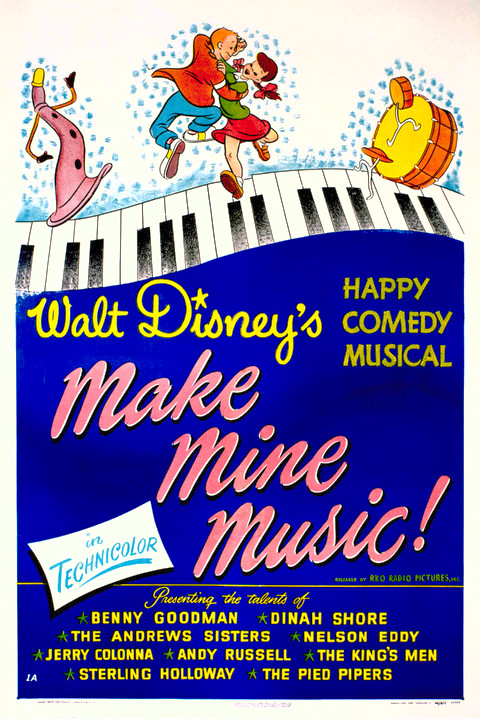
Make Mine Music is a 1946 American animated anthology film produced by Walt Disney and released to theatres on April 20, 1946. It is the 8th animated feature in theWalt Disney Animated Classics series.
During the Second World War, much of Walt Disney’s staff was drafted into the army, and those that remained were called upon by the U.S. government to make training and propaganda films. As a result, the studio was littered with unfinished story ideas. In order to keep the feature film division alive during this difficult time, the studio released six package films including this one, made up of various unrelated segments set to music. This is the third package film, following Saludos Amigos and The Three Caballeros. It received mixed to positive reviews, though its first segment, The Martins and the Coys, was panned by critics due to its overuse of violence. The film was entered into the 1946 Cannes Film Festival.
The musical director was Al Sack.
Click here for more information about Make Mine Music!

Saludos Amigos (Hello, Friends in English) is a 1942 animated feature package film produced by Walt Disney and released by RKO Radio Pictures. It is the sixth animated feature in the Walt Disney Animated Classics series. It is the first of six package films made by Walt Disney Animation Studios in the 1940s. Set in Latin America, it is made up of four different segments; Donald Duck stars in two of them and Goofy stars in one. It also features the first appearance of José Carioca, the Brazilian cigar-smoking parrot. Saludos Amigos was popular enough that Walt Disney decided to make another film about Latin America, The Three Caballeros, to be produced two years later. Saludos Amigos premiered in Rio de Janeiro on August 24, 1942. It was released in the United States on February 6, 1943. It garnered positive reviews and was only reissued once, in 1949, when it was shown on a double bill with the first reissue of Dumbo.
Click here for more information about Saludos Amigos.

The Adventures of Ichabod and Mr. Toad is a 1949 animated package film produced by Walt Disney Productions and released by RKO Radio Pictures. The film consists of two segments – the first is based on the 1908 children’s novel The Wind in the Willows by British author Kenneth Grahame, and the second is based on the 1820 short story “The Legend of Sleepy Hollow,” called Ichabod Crane in the film, by American author Washington Irving.
The film is the 11th Walt Disney theatrical animated feature and is the last of the studio’s package film era of the 1940s, following Saludos Amigos, The Three Caballeros,Make Mine Music, Fun and Fancy Free, and Melody Time.
Beginning in 1955, the two portions of the film were separated, and televised as part of the Disneyland television series. They were later marketed and sold separately on home video.
As the film’s animated segments are based on literary works, they are both introduced in live-action scenes set in a library as a framing device. The first segment is introduced and narrated by Basil Rathbone, and the second segment is introduced and narrated by Bing Crosby.
Click here for more information on The Adventures of Ichabod and Mr. Toad!

The Three Caballeros is a 1944 American animated musical film produced by Walt Disney Productions. The film premiered in Mexico City on December 21, 1944. It was released in the United States on February 3, 1945 and in the UK that March. The seventh animated feature in the Walt Disney Animated Classics series, the film plots an adventure through parts of Latin America, combining live-action and animation. This is the second of the six package films released by Walt Disney Animation Studios in the 1940s.
The film is plotted as a series of self-contained segments, strung together by the device of Donald Duck opening birthday gifts from his Latin American friends. Several Latin American stars of the period appear, including singers Aurora Miranda (sister of Carmen Miranda) and Dora Luz, as well as singer and dancer Carmen Molina.
The film was produced as part of the studio’s good will message for South America.[2] The film stars Donald Duck, who in the course of the film is joined by old friend José Carioca, the cigar-smoking parrot from Saludos Amigos (1942) representing Brazil, and later makes a new friend in the persona of pistol-packing rooster Panchito Pistoles, representing Mexico. (The film was plagued by a severe case of white specks and excess grain.)

Vintage Disney artwork in the form of cels, lobby cards, and other-hand-drawn images! Own a part of art history with these original works used in the making or marketing of the film!
Some of the Vintage Disney treasures you may find here:
Model sheets can also be referred to as character boards or studies. They are an exercise in various body and facial movements for specific characters used as a reference for all character animators. This enables the dozens or even hundreds of animators involved in bringing this one character to life an understanding of proportions and mannerisms for that particular character so that there is continuity throughout the film.
Production cels are transparent sheets on which the main character and/or the objects in motion are drawn or painted on. When a series of these are laid on a static background, it gives a sense of movement in space.
Lobby Cards are were created by the movie’s marketing department and sent to theaters as a way to market the movies release. Most of these were used for the original marketing and as such, there are normal wear and tears so the condition will be as-is. Click on the individual lobby card pages to see the unique details.

A Boy Named Charlie Brown is a 1969 American animated musical film, produced by Cinema Center Films, distributed by National General Pictures, and directed by Bill Meléndez, it is the first feature film based on the Peanuts comic strip. It was also the final time that Peter Robbins voiced the character of Charlie Brown (Robbins had voiced the role for all the Peanuts television specials up to that point, starting with the debut of the specials, 1965’s A Charlie Brown Christmas).
When Charlie Brown’s baseball team loses the first Little League game of the season, he becomes convinced that he will never win anything. Linus encourages him to maintain a positive attitude and suggests that people learn more from losing. When Charlie Brown remains morose (“That makes me the smartest person in the world,” he says), Linus assures him that he will eventually win at something…but then promptly makes a liar of himself by beating Charlie at a game of tic-tac-toe. That night, Snoopyhas a nightmare about being shot down while fighting an aerial battle with an unshown enemy, and he takes over Charlie Brown’s bed. When Charlie Brown stops atLucy’s psychiatric help booth, she prepares slides to show him all of his faults; the experience only leaves him more depressed. At a playground, Lucy jokingly suggests that Charlie Brown enter the school spelling bee. Linus, however, considers it a good idea and encourages him despite the jeers of Lucy, Patty, and Violet (“Failure Face”).
Charlie Brown nervously enters the spelling bee, and he defeats the other children in his class when he spells insecure, a word he considers his trademark. As Charlie Brown studies for the school championship, he and Linus sing a spelling mnemonic (“I Before E Except After C”) as Snoopy accompanies them on a Jew’s harp. In class the next day, Charlie Brown freezes when challenged with perceive, but he recovers when Snoopy plays the song’s accompaniment outside the school. Crowned champion, the other kids cheerfully follow him home and sing (“Champion Charlie Brown”). Lucy proclaims herself his agent, and when his friends suggest that he continue studying, he is confused. They tell him that he must now take part in the National Spelling Bee in New York City, and he is again filled with self-doubt. As Charlie Brown leaves, Linus reluctantly offers him his blanket for good luck, and the other kids cheer him.
Back at home, Linus suffers terrible withdrawal after being separated from his blanket. Unable to withstand it, he pleads with Snoopy to go to New York City and help him recover it. The two meet with an exhausted Charlie Brown at his hotel room, and he apologizes for not knowing where he left Linus’ blanket. As Linus checks the New York Public Library in vain, Snoopy engages in a fantasy ice-skating routine atRockefeller Center. The two reunite and return to Charlie Brown, only to find him absentmindedly using the blanket as a shoe-shine cloth. Ecstatic to have his blanket back, Linus joins Snoopy in the audience as Charlie Brown competes; the other children watch the contest at home on television. One-by-one, the other contestants are eliminated until only Charlie Brown and one other boy remain. After correctly spelling several words, Charlie Brown is eliminated when he misspells beagle.
Depressed, Charlie Brown returns home, along with Linus and Snoopy, but unlike the crowd of people that saw them off, no one is there to greet them when their bus pulls in. They trudge home, and the next day, Linus visits Charlie Brown. Sally tells him her brother has been in his room all day with the shades down and refuses to see or talk to anybody. Linus tells Charlie Brown that the other kids missed him at school, but Charlie Brown says he will never return to school again. As Linus leaves, he points out that the world did not end despite Charlie Brown’s failure. Charlie Brown thinks for a moment, gets dressed, and goes outside. He sees the other children playing, and when he spots Lucy as she plays with a football which is the same one he failed to kick earlier, he sneaks up behind her to kick it. She pulls it away before he can, and welcomes him home and the two look at the audience before we fade out.
Production
The film was partly based on a series of Peanuts comic strips originally published in newspapers in February 1966. That story had a much different ending: Charlie Brown was eliminated in his class spelling bee right away for misspelling the word maze (“M–A–Y–S” while thinking of baseball legend Willie Mays), thus confirming Violet’s prediction that he would make a fool of himself. Charlie Brown then screams at his teacher in frustration, causing him to be sent to the principal’s office (A few gags from that storyline, however, were also used in You’re in Love, Charlie Brown).
A Boy Named Charlie Brown, while directed and produced by the same team of Bill Melendez and Lee Mendelson, who were responsible for all the Peanuts television specials (Phil Roman directed later TV specials starting around the mid-1970s), has many different aspects that most of the specials did not explore in a visual sense. The film itself has moments where there is rotoscoping prevalent, as in the sequence when Snoopy skates, and bleached-out silhouettes of real hockey players are visible behind him. Some backgrounds have a pop art feel, similar to much animation of the late 1960s, as in “The Star-Spangled Banner” sequence, where the images are purposely chaotically edited, or the sequence where Schroeder plays Beethoven on his piano, which effects a surrealistic quality similar to Disney‘s Fantasia.
There also seems to be a strong Andy Warhol influence, wherein actual photographs appear to have been painted over in semi day-glo psychedelic colors (this is particularly evident during the film’s closing credits). Melendez, who had previously worked with Bob Clampett on cartoons back in the 1940s, also uses garish colors in some sequences, which takes its cues from many Clampett backgrounds, particularly a Warner Bros. cartoon called The Big Snooze which was directed by Clampett and which Melendez had also worked on. Many backgrounds are also rendered in watercolor, or simple pen strokes, or fine lines, or sometimes all three at once. There are scenes where colors will change solidly and erratically, as witnessed by the Snoopy “Red Baron” sequence in the film. Perspective and horizon points are showcased in the “I Before E” scene. Split screen is also used to much effect in A Boy Named Charlie Brown, as well. But even with all these theatrical enhancements, at its core, the film still has the look and feel of many of the Peanuts television specials.
Reception
The movie premiered at the Radio City Music Hall in New York City, only the third animated feature to play there after Snow White and the Seven Dwarfs (1937) and Bambi (1942).
The film was well received by critics and holds a 95% rating at Rotten Tomatoes based on 19 reviews.
Time praised its use of “subtle, understated colors” and its scrupulous fidelity to the source material, calling it a message film that “should not be missed.” The New York Times‘ Vincent Canby wrote: “A practically perfect screen equivalent to the quiet joys to be found in almost any of Charles M. Schulz’s Peanuts comic strips. I do have some reservations about the film, but it’s difficult—perhaps impossible—to be anything except benign towards a G-rated, animated movie that manages to include references to St. Stephen, Thomas Eakins, Harpers Ferry, baseball, contemporary morality (as it relates to Charlie Brown’s use of his ‘bean ball’), conservation and kite flying. “
The movie was a huge success at the box office, earning $12 million. In its first week at Radio City Music Hall, it grossed $230,000, including a record $60,123 on Saturday, December 6. In its second week, it grossed $290,000 which made it number one in the United States.
A 1971 Associated Press story argued the success of A Boy Named Charlie Brown “broke the Disney monopoly” on animated feature films that had existed since the 1937 release of Snow White and the Seven Dwarfs. “The success of ‘Peanuts’ started a trend”, animation producer Fred Calvert told the AP, “but I hope the industry is not misled into thinking that animation is the only thing. You need to have a solid story and good characters, too. Audiences are no longer fascinated by the fact that Mickey Mouse can spit.”
Accolades
The film was nominated for an Academy Award for Best Original Song Score, but lost to The Beatles‘ Let It Be.
Click here for more information about A Boy Named Charlie Brown!
You’re Not Elected, Charlie Brown is the eighth prime-time animated TV special produced based upon the popular comic strip Peanuts by Charles M. Schulz, and the 10th one to air. It originally aired on CBS on October 29, 1972 before the 1972 election.
Sally comes home and tells Charlie Brown that she is never going to school again. After her brother asks many questions on why, she says “I can’t get my stupid locker open!” The next day Charlie Brown wakes her up telling her to get ready for school. Sally reminds him she will not go back there, but Charlie Brown promises he will help with her locker. Charlie Brown tells her that some lockers are a little difficult and touchy, and she needs to make sure the numbers are just right. But Sally tells him that is not the problem, the problem is she cannot reach it to open it. He does not know what to say so Sally brings him into her classroom for something else: to use him as her show-and-tell presentation, much to his embarrassment. After this, Charlie Brown sees a poster that says “Student Body President Election”. Linus thinks that would be a good job for Charlie Brown, but Lucy thinks Linus would be the better candidate. Also running is a student named Russell Anderson. Linus runs for the office with a vigorous and enthusiastic campaign, taking an early lead in the polls.
Unfortunately, he suffers a setback when, during his last address to the student body, he decides to ad lib a mention of The Great Pumpkin. Nonetheless he wins the election by one vote–84 to 83–the deciding vote cast from Russell, who has decided that Linus is, in fact, better for the job. Following his victory, Linus goes to the principal with the intention of keeping his campaign promises and laying down the law, only to be taken aback with the realization that he is still strictly subordinate to the faculty and in fact, like most student government positions, has no real power. Regardless, Sally has a fit and accuses him of selling out like all other politicians. She then kicks the bottom of her locker and walks away, not realizing that she has finally opened it.
Click here for more information on You’re Not Elected, Charlie Brown!

A Charlie Brown Christmas is a musical animated television special based on the comic strip Peanuts, by Charles M. Schulz. Produced by Lee Mendelson and directed by Bill Melendez, the program made its debut on CBS on December 9, 1965. In the special, lead character Charlie Brown finds himself depressed despite the onset of the cheerful holiday season. Lucy suggests he direct a school Christmas play, but he is both ignored and mocked by his peers. The story touches on the over-commercialization and secularism of Christmas, and serves to remind viewers of the true meaning of Christmas (the birth of Jesus Christ).
Peanuts had become a phenomenon worldwide by the mid-1960s, and the special was commissioned and sponsored by The Coca-Cola Company. It was written over a period of several weeks, and animated on a shoestring budget in only six months. In casting the characters, the producers went an unconventional route, hiring child actors. The program’s soundtrack was similarly unorthodox: it features a jazz score by pianist Vince Guaraldi. Its absence of a laugh track (a staple in television animation in this period), in addition to its tone, pacing, music, and animation, led both the producers and network to wrongly envision the project as a disaster preceding its broadcast.
A Charlie Brown Christmas received high ratings and acclaim from critics. It has since been honored with both an Emmy and Peabody Award. It became an annual broadcast in the United States, and has been aired during the Christmas season traditionally every year since its premiere. Its jazz soundtrack also achieved commercial success, going triple platinum in the US. Live theatrical versions of A Charlie Brown Christmas have been staged. ABC currently holds the rights to the special, and broadcasts it at least twice during the weeks leading up to Christmas.
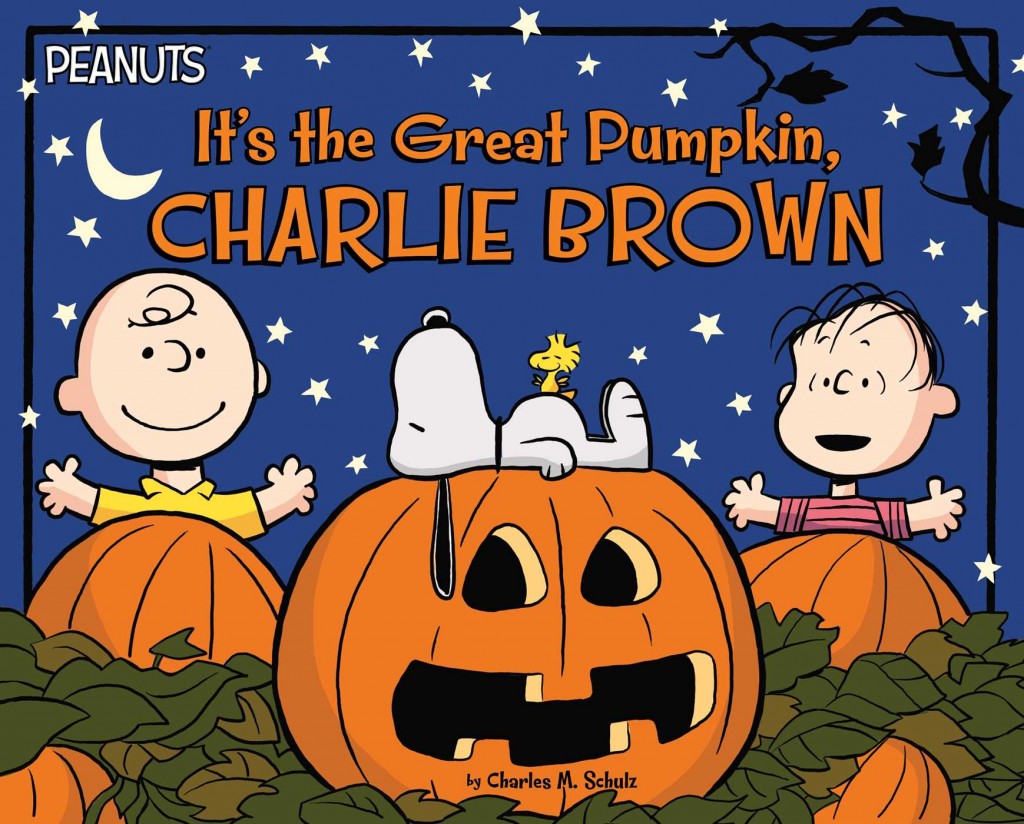
It’s the Great Pumpkin, Charlie Brown is a 1966 American prime time animated television special based on the comic strip Peanuts by Charles M. Schulz.
A Halloween special, it was the third Peanuts special (and second holiday-themed special, following A Charlie Brown Christmas) to be produced and animated by Bill Melendez. It was also the first Peanuts special to use the titular pattern of a short phrase, followed by “Charlie Brown”, a pattern which would remain the norm for almost all subsequent Peanuts specials. Its initial broadcast took place on October 27, 1966, on CBS, preempting My Three Sons. CBS re-aired the special annually through 2000, with ABC picking up the rights beginning in 2001, where it now airs annually during the Halloween season. Until 2013 ABC broadcast, You’re Not Elected, Charlie Brownaired immediately after It’s the Great Pumpkin, as if to emphasize the proximity of Halloween to Election Day. Also, the Great Pumpkin is mentioned in You’re Not Elected. The special aired twice in 2014 and 2015. The first time, ABC aired Toy Story of Terror with The Great Pumpkin following afterward. The second time was the more traditional airing with You’re Not Elected following afterwards.
The program was nominated for an Emmy Award. It has been issued on home video several times, including a Remastered Deluxe Edition of the special released byWarner Home Video on September 2, 2008, with the bonus feature It’s Magic, Charlie Brown which was released in 1981.To celebrate its 40th anniversary, a retrospective book was published in 2006. It’s the Great Pumpkin, Charlie Brown: The Making of a Television Classic includes the entire script, never-before-seen photographs, storyboard excerpts, and interviews with the original child actors who provided the voices of the Peanuts gang.
A history of the program and the various religious interpretations of Linus’ sincere belief in the Great Pumpkin are explained in the 2015 book, A Charlie Brown Religion.
Click here for more information on It’s the Great Pumpkin, Charlie Brown!

Fantasia 2000 is a 1999 American animated anthology film produced by Walt Disney Feature Animation and released by Walt Disney Pictures. It is the 38th film in the Walt Disney Animated Classics series and the sequel to the 1940 film Fantasia. As with its predecessor the film consists of animated segments set to pieces of classical music, with The Sorcerer’s Apprentice being the only segment that is featured in both films. The soundtrack was performed by the Chicago Symphony Orchestra with conductor James Levine. A group of celebrities introduce each segment in live-action scenes including Steve Martin, Itzhak Perlman, Bette Midler, Penn & Teller, James Earl Jones, Quincy Jones, and Angela Lansbury.
Roy E. Disney first thought of a sequel to Fantasia in 1974, only to pitch the film to Disney chairman Michael Eisner ten years later. Production began in 1990, and the film is notable for being the first production of Walt Disney Animation Studios to feature computer generated imagery, although there is a combination with hand-drawn background. Peter Schickele worked with Levine on the musical arrangement of each musical piece.
Fantasia 2000 premiered at Carnegie Hall on December 17, 1999 as part of a five-city concert tour, with performances in London, Paris, Tokyo, and Pasadena, California. An exclusive release in IMAX theaters followed from January 1 to April 30, 2000, becoming the first animated feature-length film issued in the format. Fantasia 2000 was opened wide in the United States on June 16, 2000 and has earned $90.8 million in gross revenue worldwide.
More about the film is available at: http://en.wikipedia.org/wiki/Fantasia_2000

Big Hero 6 – Original and Limited Edition Art
Robotics prodigy Hiro (Ryan Potter) lives in the city of San Fransokyo. Besides his older brother, Tadashi, Hiro’s closest companion is Baymax (Scott Adsit), a robot whose sole purpose is to take care of people. When a devastating turn of events throws Hiro into the middle of a dangerous plot, he transforms Baymax and his other friends, Go Go Tamago (Jamie Chung), Wasabi (Damon Wayans Jr.), Honey Lemon (Genesis Rodriguez) and Fred (T.J. Miller) into a band of high-tech heroes.
Release date: November 7, 2014 (USA)
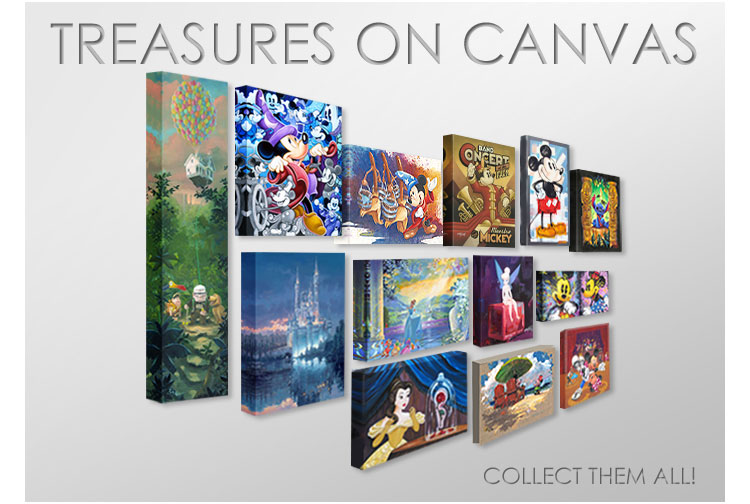
Disney Fine Art has released a collection of gallery wrapped giclees on canvas that come with a certificate of authenticity–in editions of 1500,
all for $150 each. They make a wonderful gift or surprise for someone you love, even if that someone is you!
Check directly with our gallery for availability.
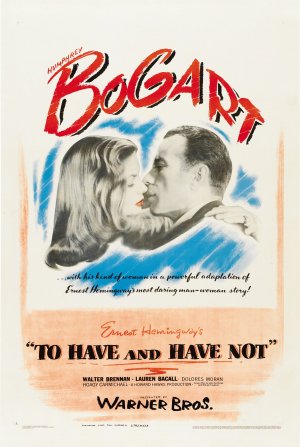
To Have and Have Not takes place during WWII, where American expatriate Harry Morgan helps transport a Free French Resistance leader and his beautiful wife to Martinique while romancing a sexy lounge singer.

The Transformers franchise was originally inspired by Microman and its spin-off, Diaclone, toy lines created by a Japanese manufacturer. These eventually became the transformers toy line by Hasbro. Having worked with Marvel Comics and building on the success of the marketing strategy used for G.I Joe: A Real American Hero, which was comprised of a toy line, tie-in comic, and an animated miniseries, it was decided to approach the development of the Transformers in the same way.
The pilot episode first aired in September 1984. We learned that there were two warring factions of humanoid robots- Optimus Prime’s heroic Autobots and the evil Decepticons, led by Meagtron. They were embroiled in a battle on present-day Earth for control of resources that could take them back home. The first Transformers movie was an animated feature film released summer 1986. The cartoon series would air for 4 seasons from 1984-1987. A 5th season was aired in 1988 but was more of a Best Of…showing 15 episodes from the original series along with The Transformers: The Movie.
Check out the IMDB page for more information about the original cartoon series here. It provides a synopsis of each season’s episodes and cast bios.
And for further insight into the movies including the animated feature from 1986 enjoy the IMDB links provided below:
The Transformers: The Movie (1986), Transformers (2007), Transformers: Revenge of the Fallen (2009), Transformers: Dark of the Moon (2011), Transformers: Age of Extinction (2014)

Top Hat is a 1935 American screwball musical comedy film in which Fred Astaire plays an American dancer named Jerry Travers, who comes to London to star in a show produced by Horace Hardwick (Edward Everett Horton). He meets and attempts to impress Dale Tremont (Ginger Rogers) to win her affection. The film also features Eric Blore as Hardwick’s valet Bates, Erik Rhodes as Alberto Beddini, a fashion designer and rival for Dale’s affections, and Helen Broderick as Hardwick’s long-suffering wife Madge.
The film was written by Allan Scott and Dwight Taylor. It was directed by Mark Sandrich. The songs were written by Irving Berlin. “Top Hat, White Tie and Tails” and “Cheek to Cheek” have become American song classics. It has been nostalgically referred to — particularly its “Cheek to Cheek” segment — in many films, including The Purple Rose of Cairo (1985) and The Green Mile (1999).
Top Hat was the most successful picture of Astaire and Rogers’ partnership (and Astaire’s second most successful picture after Easter Parade), achieving second place in worldwide box-office receipts for 1935. While some dance critics maintain that Swing Time contained a finer set of dances, Top Hat remains, to this day, the partnership’s best-known work.
Click here for more information about Top Hat!

Beany and Cecil was an animated cartoon series created by Bob Clampett under the Warner Brothers aegis, based on a hand puppet TV show in the late 40's by Clampett.

Godzilla (ゴジラ Gojira?) is a Japanese series of Kaiju films featuring the character Godzilla.
The first film, Godzilla, is considered to be an early and influential classic in the “Giant Monster” film genre and was first released by Toho Company, LTD in 1954 and directed by Ishiro Honda. It was adapted by an American company into Godzilla, King of the Monsters!, edited and with added principal scenes featuring Raymond Burr, the film was released internationally becoming a commercial success.
The original Godzilla was greatly inspired by the commercial success of the 1952 re-release of King Kong, and the 1953 success of The Beast from 20,000 Fathoms. Godzilla would go on to inspire Gorgo, Gamera, Cloverfield, and many others. The original film has also inspired many sequels along with an American reimagining and a second American reboot of the franchise. The popularity of the films has introduced the character in other media in the franchise such as television, music, literature including a series of books and comics along with video games. Its character has been one of the most recognizable symbols in Japanese popular culture worldwide and remains an important facet of Japanese films, and was the first example of the tokusatsu genre of Japanese entertainment.
The name “Godzilla” is a romanization, by the film production company Toho Company Ltd., of the original Japanese name “Gojira” — which is a combination of two Japanese words: gorira (ゴリラ) ‘gorilla’ and kujira (クジラ) ‘whale’. The word alludes to the size, power and aquatic origin of Godzilla.
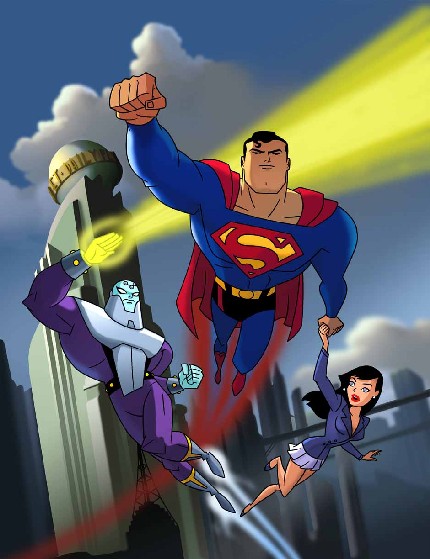
Superman: The Animated Series is an American animated television series based on the DC Comics flagship character,Superman. It was produced by Warner Bros. Animation and originally aired on The WB Television Network from September 6, 1996 to February 12, 2000. The series was the first of several spin-offs of the acclaimed Batman: The Animated Series, and was equally praised for its thematic complexity, quality animation, maturity and modernization of its title character.
Superman: The Animated Series is widely regarded as one of the finest and most faithful adaptations of the character ever. It is considered the animated counterpart/equivalent to Batman: The Animated Series, sharing its unique animation style and adult-oriented approach. It currently holds an 8.3 rating on IMDb ranking 3rd on DCAU’s best reviewed shows, behind only Batman and Justice League, which are listed as 1st and 2nd respectively. In January 2009, Superman ranked #36 on IGN’s ‘Top 100 Animated Series’ list, again listed behind fellow DCAU shows Batman and Justice League, which were ranked #2 and #20 respectively.
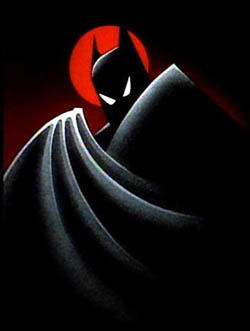
Batman art from Batman: The Animated Series, The New Batman Adventures, and Batman Beyond is highly sought-after.
Batman the animated series is an American animated television series based on the DC Comics superhero Batman. The series was produced by Warner Bros. Animation and originally aired on the Fox Network from September 5, 1992 to September 15, 1995. The visual style of the series, dubbed “Dark Deco,” was based on the film noir artwork of producer and artist Eric Radomski, although Bruce Timm is often mistakenly given credit for this due to the fact that the characters were based on his designs. The series was widely praised for its thematic complexity, dark tone, artistic quality, and faithfulness to its title character’s crime-fighting origins. The series also won four Emmy Awards, including Outstanding Animated Program.
The second season of the series was retitled as The Adventures of Batman and Robin and is simply a continuation of the series.
The third season saw a drastic redesign of the entire aesthetic, taking a similar design approach to Superman: The Animated Series, which was being produced by the same animation team at the same time. This third and fourth season also was retitled as The New Batman Adventures. TNBA, despite its changes, is a continuation of the acclaimed Batman: The Animated Series. The series turned to focus more on Batman’s supporting cast, including Robin, Nightwing and Batgirl. It also saw several crossovers including the acclaimed first animated team-up of Batman and Superman in the appropriately titled episode “World’s Finest”. The aesthetic would also be emulated for the Justice League and Justice League: Unlimited series, which stars the same Batman.
The New Batman Adventures (often shortened as TNBA) is an American superhero animated television series based on the DC Comics superhero Batman, and is a continuation of the 1990s Batman: The Animated Series. It was produced by Warner Bros. Animation and aired on Kids’ WB from September 13, 1997 to January 16, 1999.
Stories in this series tend to give more focus to Batman’s supporting cast, which include fellow crimefighters Robin, Nightwing and Batgirl, among others. The show also features guest stars such as Supergirl, Etrigan the Demon and The Creeper; characters who would later appear with Batman in Justice League and Justice League Unlimited. The 2001 video game Batman: Vengeance and its follow-up Batman: Rise of Sin Tzu are based on this series.
Batman Beyond is an American Superhero animated television series developed by Bruce Timm, Paul Dini, and Alan Burnett and produced by Warner Bros. Animation in collaboration with DC Comics as a continuation of the Batman legacy. The series began airing on January 10, 1999, and ended its run on December 18, 2001. After 52 episodes spanning three seasons and one direct-to-video feature film, the series was put on hold for the Justice League animated series, despite the network having announced plans for a fourth season.
Depicting a teenaged Batman in a futuristic Gotham City under the tutelage of an elderly Bruce Wayne, Batman Beyond is set in the chronological future of the DC animated universe (despite being released before Static Shock, Justice League and Justice League Unlimited), and serves as a continuance of both Batman: The Animated Series and The New Batman Adventures.

Yogi Bear is a family cartoon character, created by Hanna-Barbera Productions, who has appeared in numerous comic books, animated television shows and films. He made his debut in 1958 as a supporting character in The Huckleberry Hound Show. Yogi Bear was the first breakout character created by Hanna-Barbera and was eventually more popular than Huckleberry Hound. In January 1961, he was given his own show, The Yogi Bear Show, sponsored by Kellogg’s, which included the segments Snagglepuss and Yakky Doodle. Hokey Wolf replaced his segment on The Huckleberry Hound Show. A musical animated feature film, Hey There, It’s Yogi Bear!, was produced in 1964.
Like many Hanna-Barbera characters, Yogi’s personality and mannerisms were based on a popular celebrity of the time. Art Carney’s Ed Norton character on The Honeymooners was said to be Yogi’s inspiration. His voice mannerisms broadly mimic Carney as Norton.
The plot of most of Yogi’s cartoons centered on his antics in the fictional Jellystone Park, a takeoff on the famous Yellowstone National Park. Yogi, accompanied by his constant companion Boo-Boo Bear, would often try to steal picnic baskets from campers in the park, much to the displeasure of Park Ranger Smith. Yogi’s girlfriend, Cindy Bear, sometimes appeared and usually disapproved of Yogi’s antics.
Besides often speaking in rhyme, Yogi Bear had a number of catchphrases, including his pet name for picnic baskets (“pic-a-nic baskets”) and his favorite self-promotion (“I’m smarter than the av-er-age bear!”), although he often overestimates his own cleverness. Another characteristic of Yogi was his deep and silly voice. He often greets the ranger with a cordial, “Hello, Mr. Ranger, sir!” and “Hey there, Boo Boo!” as his preferred greeting to his sidekick, Boo Boo. Yogi would also often use puns in his speech, and have a habit of pronouncing large words with a long vocal flourish.
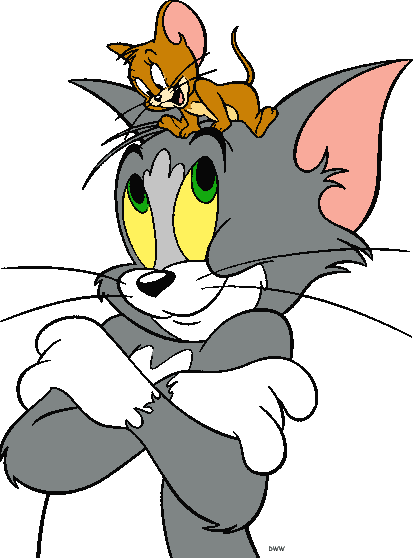
Tom and Jerry is an American animated series of short films created in 1940 by William Hanna and Joseph Barbera. It centers on a rivalry between its two main characters: Tom Cat and Jerry Mouse, and many recurring characters. The humor of the series is based around slapstick comedy, most often inflicted on Tom. Tom and Jerry has gained a worldwide audience and is one of the most popular and critically acclaimed cartoon series. In its original run, Hanna and Barbera produced 114 Tom and Jerry shorts for Metro-Goldwyn-Mayer from 1940 to 1957. During this time, they won seven Academy Awards for Animated Short Film, tying first place with Walt Disney’s Silly Symphonies with the most awards in the category. After the MGM cartoon studio closed in 1957, MGM revived the series with Gene Deitch directing an additional 13 Tom and Jerry shorts for Rembrandt Films from 1961 to 1962. Chuck Jones then produced another 34 shorts with Sib-Tower 12 Productions between 1963 and 1967.
A number of spin-offs have been made, including the television series The Tom and Jerry Show (1975–77), The Tom and Jerry Comedy Show(1980–82), Tom & Jerry Kids (1990–94), Tom and Jerry Tales (2006–08), and The Tom and Jerry Show (2014). The first feature-length film based on the series, Tom and Jerry: The Movie, was released in 1992 before ten direct-to-video films were produced between 2002 and 2013.
Tom is a gray and white domestic shorthair cat, while Jerry is a small brown house mouse that generally lives in close proximity to Tom. Jerry possesses surprising strength for his size, lifting items such as anvils with relative ease and withstanding considerable impacts with them. Despite the typical cat-eats-mouse scenario, it is surprisingly quite rare for Tom to actually try and consume Jerry; most of his attempts are just to torment or humiliate Jerry. Despite being very energetic and determined, Tom is no match for Jerry’s brains and wits. By the final “fade-out” of each cartoon, Jerry usually emerges triumphant, while Tom is shown as the loser. However, other results may be reached; on rare occasions, Tom triumphs, usually when Jerry becomes the aggressor or when he crosses some sort of line (the best example of which occurs in “The Million Dollar Cat” where, after finding out that Tom’s newly acquired wealth will be taken away if he harms any animal, including a mouse, he torments Tom until Tom finally loses his temper and attacks him).
Sometimes, usually ironically, they both lose, usually when Jerry’s last trap potentially backfires on him after it affects Tom (An example is in Chuck Jones’ Filet Meow short where Jerry orders a shark to scare Tom away from eating a goldfish. Afterwards, the shark scares Jerry away as well) or when Jerry overlooks something at the end of the course. Sometimes, they both end up being friends (only for something to happen so that Tom will chase Jerry again).
Both characters display sadistic tendencies, in that they are equally likely to take pleasure in tormenting each other. However, depending on the cartoon, whenever one character appears to be in mortal danger (in a dangerous situation or by a third party), the other will develop a conscience and save him. Sometimes, they bond over a mutual sentiment towards an unpleasant experience and their attacking each other is more play than serious attacks. Multiple shorts show the two getting along with minimal difficulty, and they are more than capable of working together when the situation calls for it, usually against a third party who manages to torture and humiliate them both. Sometimes this partnership is forgotten quickly when an unexpected event happens or when one character feels that the other is no longer necessary. (Example is when in Posse Cat, when Jerry decides to pretend to get chased by Tom in exchange for half his food. Tom agrees to this, but then he goes back on his word later.) Other times however, Tom does keep his promise to Jerry and the partnerships are not quickly dissolved after the problem is solved.
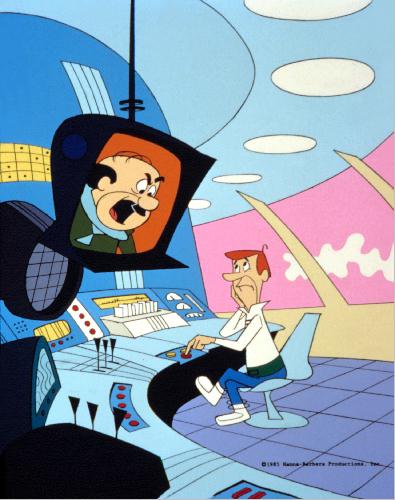
The Jetsons is an American animated sitcom produced by Hanna-Barbera, originally airing in primetime from 1962-1963, then later as part of the weekday/weekend morning programming block called The Funtastic World of Hanna-Barbera, until 1987. New episodes were produced from 1984-1987 as well. It was Hanna-Barbera’s Space Age counterpart to The Flintstones. While the Flintstones live in a world with machines powered by birds and dinosaurs, the Jetsons live in the year 2062 in a futuristic utopia (100 years in the future at the time of the show’s debut) of elaborate robotic contraptions, aliens, holograms, and whimsical inventions.
The Jetsons are a family residing in Orbit City in the year 2062. The city’s architecture is rendered in the Googie style, and all homes and businesses are raised high above the ground on adjustable columns. George Jetson lives with his family in the Skypad Apartments: his wife Jane is a homemaker, their teenage daughter Judy attends Orbit High School, and their early-childhood son Elroy attends Little Dipper School. Housekeeping is seen to by a robot maid, Rosie, which handles chores not otherwise rendered trivial by the home’s numerous push-button Space Age-envisioned conveniences. The family has a dog named Astro, which talks with an initial consonant mutation in which every word begins with an “R”, as if speaking with a growl.
George Jetson’s workweek is typical of his era: an hour a day, two days a week. His boss is Cosmo Spacely, the diminutive yet bombastic owner of Spacely Space Sprockets. Spacely has a competitor, Mr. Cogswell, owner of the rival company Cogswell Cogs (sometimes known as Cogswell’s Cosmic Cogs). Jetson commutes to work in an aerocar that resembles a flying saucer with a transparent bubble top. Daily life is leisurely, assisted by numerous labor-saving devices, which occasionally break down with humorous results. Despite this, everyone complains of exhausting hard labor and difficulties living with the remaining inconveniences.

Mr. Peabody & Sherman is a 2014 American 3D computer-animated film produced by Dreamworks Animation. It stars the titular characters Mr. Peabody and Sherman from the 1950-1960s Peabody’s Improbable History from The Rock and Bullwinkle Show. The film was released on March 7, 2014.
The film features Mr. Peabody, the smartest being in existence, and his adopted son Sherman. After years of homeschooling Sherman, Mr. Peabody decides that it would best for Sherman if he attended an actual school and experienced that kind of learning environment. However, things go awry on the first day when Sherman gets into an altercation with a fellow student named Penny Peterson. The adoption agency reprimands Mr. Peabody and warns that they will reclaim Sherman if there are any more incidents. In order to smooth things over, Mr. Peabody invites the Peterson family over for dinner to “break the ice”. Things go further awry when, in an attempt to impress Penny, Sherman activates the WABAC Machine, sending both back across time, with disastrous and comical results. Now, it’s up to Peabody and Sherman to rescue Penny and put things back on track before the space-time continuum is irreparably destroyed.

Fearless optimist Anna teams up with Kristoff in an epic journey, encountering Everest-like conditions, and a hilarious snowman named Olaf in a race to find Anna's sister Elsa, whose icy powers have trapped the kingdom in eternal winter.

Every year at Christmas and the holiday season, we get requests for great images at a price perfect for gift-giving. There are limited edition sculptures and interpretive art created by Disney artists, giclees on paper by Hanna Barbera and Warner Brothers artist Willie Ito, prints on paper by famed movie poster campaign artist John Alvin, signed art by Harry Potter book cover artist Mary Grandpre, and original drawings, just for a start!
Take a look at our selection, and by all means, call us with questions! Happy Holidays, and here’s hoping we find exactly what you want and need!
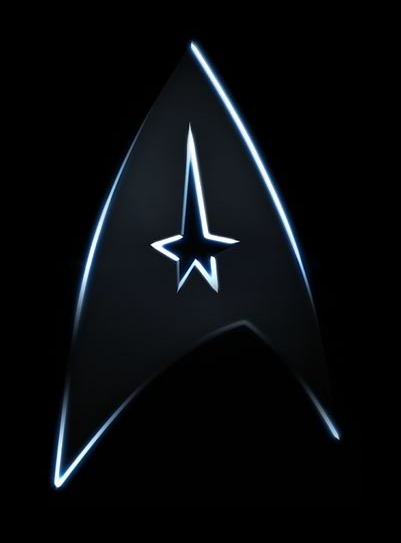
Space, the Final Frontier...

A series of books revolving around horses and lengths people will go to protect them.
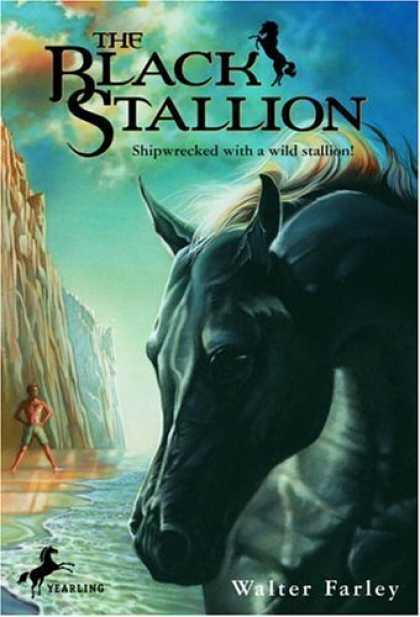
The adventures of a willful stallion. That is also black.

The great American unsuccess story - as seen through poor Charlie Brown

Indiana Jones embarks on one of his most exciting adventures, searching for the legendary Ark of the Covenant, a relic of immense and dangerous power.